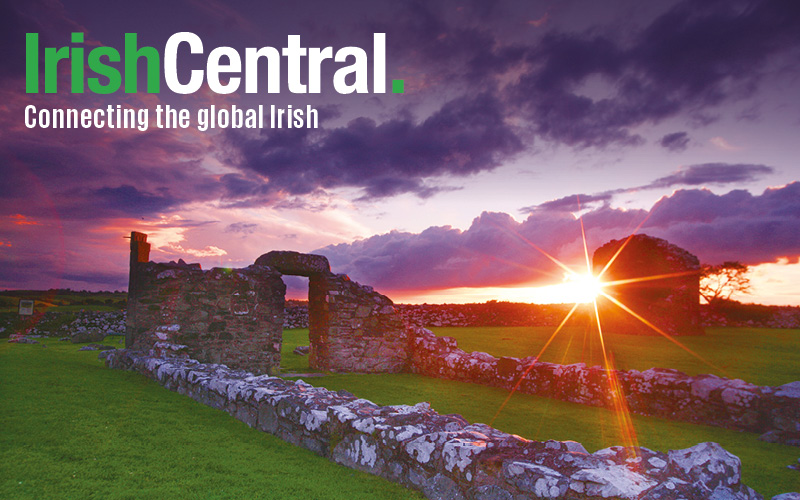Findmypast is working in partnership with IrishCentral to share fascinating insights into your Irish ancestors. Click here to get a special half price subscription, and discover your Irish roots today!
Life looks good for Chris O’Dowd at the moment. He’s been filling movie theatres recently thanks to the critically acclaimed Calvary – dubbed the ‘best Irish film ever’, after proving a runaway success in the 2011 smash hit Bridesmaids.
Arguably the country’s fastest-rising star, O’Dowd is deeply proud of his Irish heritage. After taking a lead role in the 2013 TV comedy series ‘Family Tree’, he was eager to investigate his family’s roots.
Chris was recently looking to buy a house in Ireland when he found a dilapidated castle in need of renovation. By wonderful chance it turned out to be called O’Dowd Castle. Naturally intrigued, Chris started researching his family history to find out whether his family had any links to the building.
During his research, the actor became convinced that he is related to English singer Boy George -real name George O’Dowd. In fact, Chris shares his surname with thousands of O’Dowds, as it is one of the oldest continually used family names in the world.
The name dates back to the King of Connaught, Aedh Ua Dubhda (or Hugh O’Dowd), who “died an untroubled death” in 982. The quote (above) detailing his passing in the Book of Leinster, is the first known record of the O’Dowd surname. It is one of few names that have almost universally kept the “O,” with O’Dowd still being far more common than Dowd.
O’Dowd literally translates as “grandson of the Dark One” and derives from a 9th- century king of Connacht called Dubhda, from the Irish root word dubh, meaning black. The clan’s lineage can be traced back to Niall Noigiallach (Niall of the Nine Hostages), perhaps Irish history’s most prolific King. He was apparently so virile that it is believed that 6% of all Scots, and 20% of all Irishmen are his direct descendants.
Following the Norman invasions of 1161 and 1171, the O’Dowd’s lands were reduced to their historic holdings in counties Sligo and Mayo. One O’Dowd of note was Sen-Bhrian O’Dowd, who for several decades in 1354 drove all of the Anglo-Norman invaders out of Tireragh, the barony straddling Sligo and Mayo on the northern coast.
Until the late 1600s, the clan maintained an impressive string of hereditary historians. The O’Dowds left a uniquely detailed account of the inauguration ceremony of their clan leaders in the Great Book of Lecan, which remains carefully preserved in Dublin.
Today the majority of O’Dowds come from the borderlands between Sligo and Mayo, but the clan has nevertheless spread globally. Notable branches include the Nottingham O’Dowds, formed prior to World War 1 with around 20 families still living in the city today, the Argentinian O’Dowds who are descended from clan members who moved to South America in the early 1800s, and the New Zealand O’Dowds.
So, while it very likely that Chris shares some of his Irish blood with Boy George, the O’Dowd lineage also extends to countless others across the world.
From Norfolk to North America, the ancient and historically rich O’Dowd family name is still going strong and, as we are pleased to see, still producing famous Irishmen. And if Chris is unable to purchase the Castle that bears his name, he may be interested to know that 19 other Castle O’Dowds ringed this mighty clan’s ancestral homeland.
Findmypast is working in partnership with Irish Central to create expert content around Irish family history. With the largest collection of Irish family history records online and a team of expert genealogists, findmypast is the best place to discover your Irish heritage.




Comments